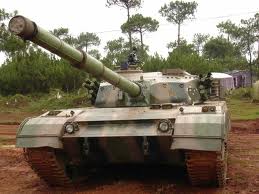What I find interesting about that link is how well developed the concept of megatexture was even at such an early stage - not even half a year after the release of Quake 3. What's even more interesting is that the software renderer in Quake 1 used a surface caching system that essentially is megatexture. All of this happened well before the current console generation too, and totally blows away the whole "megatexture is designed for consoles" slur.
69 posts
• Page 3 of 3 • 1, 2, 3
I don't like to do this but......
What I find interesting about that link is how well developed the concept of megatexture was even at such an early stage - not even half a year after the release of Quake 3. What's even more interesting is that the software renderer in Quake 1 used a surface caching system that essentially is megatexture. All of this happened well before the current console generation too, and totally blows away the whole "megatexture is designed for consoles" slur.
-

RAww DInsaww - Posts: 3439
- Joined: Sun Feb 25, 2007 5:47 pm
-

Claire Mclaughlin - Posts: 3361
- Joined: Mon Jul 31, 2006 6:55 am
Odd thing is that Intel - the other whipping boy of graphics acceleration - also does tile-based rendering. In many respects it's quite superior to the more traditional modes; a tile-based renderer with some real muscle behind it would be an nice thing to see.
As far as i know, Intel licensed PowerVR tech for their integrated graphics.
Makes sense as bandwidth is even more crucial when cpu and gpu share the same memory path as PowerVR chips don't just use tiling but also deferred texturing and eliminate the need for z-buffering if used natively with running infinite planes instead of z-buffered polygons.
I still reactivate my Dreamcast (PowerVR 2) from time to time and it's still a thrill to see what this tiny piece of hardware with only 8 megs of video memory and just 1.4 gigaflops can do.
The japanese town featured in AM2's Shen Mue (1999) is heavily loaded with tons of different textures, architecture and npcs.
Considering what pc games were capable of at that time when running with similar video memory installed, this is very impressive and definitely groundbraking.
Maybe nobody ever tried to build a tile based renderer with brute force power as this type of hardware could satisfy the market for a very long time reducing the need for buying new hardware.
It's better to deliver small steps in power gain than large ones if you want to achieve maximum profit...
What I find interesting about that link is how well developed the concept of megatexture was even at such an early stage - not even half a year after the release of Quake 3. What's even more interesting is that the software renderer in Quake 1 used a surface caching system that essentially is megatexture. All of this happened well before the current console generation too, and totally blows away the whole "megatexture is designed for consoles" slur.
Carmack was and still is a rendering tech nerd (in a positive sense
 ) so i'm not really surprised.
) so i'm not really surprised.Absolutely right that Rage's technology has got nothing to do with current consoles.
It's just about time to use different methods for rendering to push the limit if rasterization a little bit further.
The time when Quake 1 was made (1996!) software rendering was common and hardwired graphics accelerators like the 3Dfx' Voodoo were new.
Innovation slowed down when graphics acceleration was standardized to z-buffered polygons.
Before that, we had sprites, voxels, planes, polygons....
This leads me back to what i meant by fast but dumb gpus limiting programming flexibility.
In software mode, when using the (fully flexible) cpu, there's certain methods you can use for rendering you just can't do when going for maximum performance with accelerated graphics in (less flexible)gpus that are limited to a certain technology.
When looking at Ati/Amd's problems with megatexture, it's absolutely clear that speed optimizations can lead to incompatibilities.
Btw.:Megatexture is memory hungry. Rage is the largest game installation i've seen to date.
If Rage was made for consoles, which have always been limited in memory and storage space compared to the PC, it would have turned out significantly smaller in size.
21 Gigabytes to install and using these etremely large texture sizes shouldn't be a problem for modern PC systems but definitely for the heavily limited consoles.
So it can't be made for consoles. Otherwise, Carmack would be a total idiot...
-

phil walsh - Posts: 3317
- Joined: Wed May 16, 2007 8:46 pm
I don't think anyone missed the advantages tiling presents, but hardware manufacturers have to pick and choose what goes on their chips and which formats to pursue. Intel might have pursued the technology in no small part because they really were not busy keeping up with the Jones in other areas and were hoping at least their efforts with tiling might pan out. I'm just waiting to see if the newest Nvidia gpu contains their own take on tiling and what it might be. Their chips tend to push the size limits of silicon and they may decide the time is still not right to introduce anything they might have up their sleeve.
I guess tiling was way ahead of it's time when PowerVr released their first processors in the 90's.
There was no real need for bandwidth optimizations but just for accelerating simple and easy to understand rendering techniques.
Most game companies in the early 90s were still doing 2d sidescrollers and didn't know anything about floating point matrix transformations of polygons.
But the usage of polygons in a 3dimensional space (x,y,z) was already common with SGI's rendering machines and therefore a lot easier to understand and to implement than the infinite planes stuff of the PowerVR chips.
I recall reading an interview some years ago with the chief of Nvidia (forgot his name) about tile based rendering where he stated that he preferred "brute force" over intelligent rendering alternatives as brute force was giving better results at that time.
Today, we reach the limits of brute force in terms of power consumption and heat generation, so i guess alternative methods like tile based rendering become more attractive.
-

Miss Hayley - Posts: 3414
- Joined: Tue Jun 27, 2006 2:31 am
I guess tiling was way ahead of it's time when PowerVr released their first processors in the 90's. There was no real need for bandwidth optimizations but just for accelerating simple and easy to understand rendering techniques. Most game companies in the early 90s were still doing 2d sidescrollers and didn't know anything about floating point matrix transformations of polygons. But the usage of polygons in a 3dimensional space (x,y,z) was already common with SGI's rendering machines and therefore a lot easier to understand and to implement than the infinite planes stuff of the PowerVR chips. I recall reading an interview some years ago with the chief of Nvidia (forgot his name) about tile based rendering where he stated that he preferred "brute force" over intelligent rendering alternatives as brute force was giving better results at that time. Today, we reach the limits of brute force in terms of power consumption and heat generation, so i guess alternative methods like tile based rendering become more attractive.
You have to put it in the larger context. Intel graphics have mostly been used for integrated graphics for office applications where picture quality was a lower priority and until just the last year or so even their video game drivers were horrible. For them bandwidth considerations were more important then graphics quality so they adopted tiling first as a brute force approach to improving bandwidth utilization and tried to then improve on the graphics somewhat after the fact. With AMD and Nvidia that isn't an option and graphics quality must be the first priority. Notably AMD's new hardware acceleration is based on a Disney studios technique that selectively lowers the resolution on those tiles that least affect the overall picture quality.
-

Je suis - Posts: 3350
- Joined: Sat Mar 17, 2007 7:44 pm
Does Rage actually install the megatextures on a console's HDD or dose it run them from the DVD drive?
Just wondering since I don't own the console version & seen a post about having to put in the second DVD once you got so far into the game.
Also wonder just how much is installed or ran from the actual DVD with the console?
Just wondering since I don't own the console version & seen a post about having to put in the second DVD once you got so far into the game.
Also wonder just how much is installed or ran from the actual DVD with the console?
COLLECTOR CARD 43: DRONE (at 04:27 in the video guide)
Location: Dead City (2nd Visit)
This will be during the 2nd visit to Dead City. Only this time you will start in the lab. The card will be on a coffee table in the hospital lobby beneath the escalator you came down from. Basically go to your right when you come down.
The Drone Collector Card will be Last one for on Disc 1
*****DISC 2******
Before going any further check to see if you have done everything and collected all the collectibles, because if you happen to miss one you will not get the achievements and you will have to replay the whole game again.
You should have collected 43 Playing Cards, 14 Recipes and Completed 11 jumps. If you have then you can continue to Disc 2
Location: Dead City (2nd Visit)
This will be during the 2nd visit to Dead City. Only this time you will start in the lab. The card will be on a coffee table in the hospital lobby beneath the escalator you came down from. Basically go to your right when you come down.
The Drone Collector Card will be Last one for on Disc 1
*****DISC 2******
Before going any further check to see if you have done everything and collected all the collectibles, because if you happen to miss one you will not get the achievements and you will have to replay the whole game again.
You should have collected 43 Playing Cards, 14 Recipes and Completed 11 jumps. If you have then you can continue to Disc 2
-

Helen Quill - Posts: 3334
- Joined: Fri Oct 13, 2006 1:12 pm
So far as I'm aware the option is available to the user.
-

Theodore Walling - Posts: 3420
- Joined: Sat Jun 02, 2007 12:48 pm
I know in the old days at first you wasn't able to install everything to the HDD with PC, one of the older id games, don't recall witch.
But had to have the CD/DVD in the drive in order to play "Actually it was a attempt to stop bootleg of the game I believe", then later
on a patch was released so you could move stuff from the CD/DVD to the HDD so the game played much better since it lowered the load times of things.
"Actually someone posted a work around then id followed up with a patch" Was just a simple edit as to where to locate the files "like a batch file" then have the files in that location.
Hmmm so a console user has the option to load stuff from the DVD drive or install it all to HDD like a PC?
I know in the old days it helped a lot by having everything on the HDD and sure with SSD drives now days it helps even more.
Edit: Interesting stuff guys, keep it coming, please excuse my interruption.
But had to have the CD/DVD in the drive in order to play "Actually it was a attempt to stop bootleg of the game I believe", then later
on a patch was released so you could move stuff from the CD/DVD to the HDD so the game played much better since it lowered the load times of things.
"Actually someone posted a work around then id followed up with a patch" Was just a simple edit as to where to locate the files "like a batch file" then have the files in that location.
Hmmm so a console user has the option to load stuff from the DVD drive or install it all to HDD like a PC?
I know in the old days it helped a lot by having everything on the HDD and sure with SSD drives now days it helps even more.
Edit: Interesting stuff guys, keep it coming, please excuse my interruption.
-

Laura Cartwright - Posts: 3483
- Joined: Mon Sep 25, 2006 6:12 pm
Quake II was the game; generally the video files stayed on CD and everything else went to HD. The engine had a CD-check but I don't believe this was a reason why - it was perfectly capable of running without the video files and the CD-check didn't rely on them being there. I think the real reason why was because they were 156mb in size total, which was a not insignificant proportion of storage on HDs on that era.
The GPL Quake II source code still has the CD-check code present: Sys_CopyProtect and Sys_ScanForCD. Sys_CopyProtect just calls Sys_ScanForCD and errors out if not found ("You must have the Quake2 CD in the drive to play"). Sys_ScanForCD looks for "install\data\quake2.exe" on all drives from C to Z, checks if the drive is a CD, and returns the path found if so (this is so that partial installs can be also supported). Calls to Sys_CopyProtect still exist in SV_InitGame but they're #ifdef'ed out.
The standard for id games since is that they release with a CD-check and after a while the check is removed in a subsequent patch. Rage is the first once since that breaks from that pattern - an obvious benefit of Steam.
The GPL Quake II source code still has the CD-check code present: Sys_CopyProtect and Sys_ScanForCD. Sys_CopyProtect just calls Sys_ScanForCD and errors out if not found ("You must have the Quake2 CD in the drive to play"). Sys_ScanForCD looks for "install\data\quake2.exe" on all drives from C to Z, checks if the drive is a CD, and returns the path found if so (this is so that partial installs can be also supported). Calls to Sys_CopyProtect still exist in SV_InitGame but they're #ifdef'ed out.
The standard for id games since is that they release with a CD-check and after a while the check is removed in a subsequent patch. Rage is the first once since that breaks from that pattern - an obvious benefit of Steam.
-

Genocidal Cry - Posts: 3357
- Joined: Fri Jun 22, 2007 10:02 pm
Does Rage actually install the megatextures on a console's HDD or dose it run them from the DVD drive?
Just wondering since I don't own the console version & seen a post about having to put in the second DVD once you got so far into the game.
Also wonder just how much is installed or ran from the actual DVD with the console?
Just wondering since I don't own the console version & seen a post about having to put in the second DVD once you got so far into the game.
Also wonder just how much is installed or ran from the actual DVD with the console?
The 360 version can be completely installed (all 21 GB) to and then run from the harddrive.
You only have to insert the respective dvds for copyright checking. Similar to pc games in the late 90s.
Practically all dvd based 360 games can be completely installed to the harddrive.
I heard that Sony limited Rage's install size on PS3 to about 5 GB.
-

Nice one - Posts: 3473
- Joined: Thu Jun 21, 2007 5:30 am
You have to put it in the larger context. Intel graphics have mostly been used for integrated graphics for office applications where picture quality was a lower priority and until just the last year or so even their video game drivers were horrible. For them bandwidth considerations were more important then graphics quality so they adopted tiling first as a brute force approach to improving bandwidth utilization and tried to then improve on the graphics somewhat after the fact. With AMD and Nvidia that isn't an option and graphics quality must be the first priority. Notably AMD's new hardware acceleration is based on a Disney studios technique that selectively lowers the resolution on those tiles that least affect the overall picture quality.
That's exactly what i was talking about.

-

MISS KEEP UR - Posts: 3384
- Joined: Sat Aug 26, 2006 6:26 am
That's exactly what i was talking about. 

Then yeah, tiling was way ahead of its time for video games in the 90s. AMD's new hardware acceleration uses simplified gpu processors which have only been used in commercial graphics cards for a few years now. For video games I'd say its pretty clear tiling had to wait until it could be virtualized. The interesting thing about AMD's solution is that any engine can incorporate it to whatever extent they want or avoid it all together. That way developers can use megatextures for panoramic scenes and repeated textures for indoor scenes and have the best of both worlds. Eventually it would make sense to virtualize all the graphics and simplify the whole process enormously. Intel is now experimenting with using Larrabee in cloud computing for ray cast video games and for things like Sims that can benefit from more photo-realism and don't require fast response times it could be ideal, but it will be awhile before the technology is ready to be integrated into your desktop and used for faster paced games.
-

sarah - Posts: 3430
- Joined: Wed Jul 05, 2006 1:53 pm
The 360 version can be completely installed (all 21 GB) to and then run from the harddrive.
You only have to insert the respective dvds for copyright checking. Similar to pc games in the late 90s.
Practically all dvd based 360 games can be completely installed to the harddrive.
I heard that Sony limited Rage's install size on PS3 to about 5 GB.
You only have to insert the respective dvds for copyright checking. Similar to pc games in the late 90s.
Practically all dvd based 360 games can be completely installed to the harddrive.
I heard that Sony limited Rage's install size on PS3 to about 5 GB.
Really thought I had to have a PS3 for some reason
 paid over $800 for the dang thing and don't like gaming on it at all.
paid over $800 for the dang thing and don't like gaming on it at all.I did use it a pretty good bit when I first got it "till I played all the games that came with it" and a few more.
Maybe if I set it up to use a keyboard & mouse instead of the controller I might like playing games on it more.
Oh well the grand kids like playing on it & it keeps them out of my hair for awhile. lol
-

Dan Endacott - Posts: 3419
- Joined: Fri Jul 06, 2007 9:12 am
Intel is now experimenting with using Larrabee in cloud computing for ray cast video games and for things like Sims that can benefit from more photo-realism and don't require fast response times it could be ideal, but it will be awhile before the technology is ready to be integrated into your desktop and used for faster paced games.
You mean stuff like the onlive service, where the games are rendered in the server cloud and shoved through the internet line?
I'm still astonished that this seem to work quite well if the connection is good enough.
Rendering graphics in server farms for online games could turn out to be the main purpose for integrated graphics solutions.
Haven't really thought about this before.
-

Donatus Uwasomba - Posts: 3361
- Joined: Sun May 27, 2007 7:22 pm
Thanks for the info. I have a PS3 but don't game on it much, other than folding@home it doesn't do much now days. lol
Really thought I had to have a PS3 for some reason paid over $800 for the dang thing and don't like gaming on it at all.
paid over $800 for the dang thing and don't like gaming on it at all.
I did use it a pretty good bit when I first got it "till I played all the games that came with it" and a few more.
Maybe if I set it up to use a keyboard & mouse instead of the controller I might like playing games on it more.
Oh well the grand kids like playing on it & it keeps them out of my hair for awhile. lol
Really thought I had to have a PS3 for some reason
 paid over $800 for the dang thing and don't like gaming on it at all.
paid over $800 for the dang thing and don't like gaming on it at all.I did use it a pretty good bit when I first got it "till I played all the games that came with it" and a few more.
Maybe if I set it up to use a keyboard & mouse instead of the controller I might like playing games on it more.
Oh well the grand kids like playing on it & it keeps them out of my hair for awhile. lol
I usually choose the right hardware for the right type of game.
If you're mainly into playing first person shooters, i understand why you don't really use your PS3 for that.
Although i always played consoles and pc side to side, i'd say the mouse and keyboard combination is way superior for aiming than your casual gamepad.
When it comes to racing games though, i prefer a good anolog stick.
Nevertheless, gaming on pc and consoles is different.
Consolegaming is first choice for couch potatoes, pc gaming for people with a good office chair...

-

Hannah Barnard - Posts: 3421
- Joined: Fri Feb 09, 2007 9:42 am
You mean stuff like the onlive service, where the games are rendered in the server cloud and shoved through the internet line?
I'm still astonished that this seem to work quite well if the connection is good enough.
Rendering graphics in server farms for online games could turn out to be the main purpose for integrated graphics solutions.
Haven't really thought about this before.
Like I said, as long as response time or privacy are not big issues it makes perfect sense. In the future gamers may be comparing the graphics their personal computers can generate to those that can only be rendered in a cloud.
-

Jordyn Youngman - Posts: 3396
- Joined: Thu Mar 01, 2007 7:54 am
I heard that, dependig on your connection, you have to struggle with varying framerates, which shouldn't be a problem with increasing connection speeds in the future.
What i consider very interesting with this type of gaming is the immediate accessability.
No waiting for your ordered hardcopy, no installing and no hardware configuration/upgrading and driver problems.
You just choose a game you're interested in and play. Just like in the arcades in the 80s and 90s.
What i consider very interesting with this type of gaming is the immediate accessability.
No waiting for your ordered hardcopy, no installing and no hardware configuration/upgrading and driver problems.
You just choose a game you're interested in and play. Just like in the arcades in the 80s and 90s.

-

Stephy Beck - Posts: 3492
- Joined: Mon Apr 16, 2007 12:33 pm
Even without the cloud that's the direction PC gaming is already headed in. People want instant gratification in their entertainment and there's certainly nothing wrong with that. With Intel's new pram you won't even have boot times anymore. Just turn the thing on and pick up right where you left off. The new Xbox coming out won't even have a disk drive. No doubt we'll still have a ways to go before it becomes completely idiot proof and instant gratification, but there can be no doubt there is steady pressure and progress in that direction.
-

Alex Blacke - Posts: 3460
- Joined: Sun Feb 18, 2007 10:46 pm
The new Xbox coming out won't even have a disk drive.
Looks like my prediction somewhere else here in this forum was correct.

-

Heather M - Posts: 3487
- Joined: Mon Aug 27, 2007 5:40 am
69 posts
• Page 3 of 3 • 1, 2, 3
